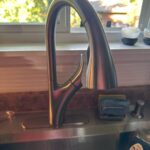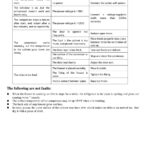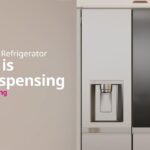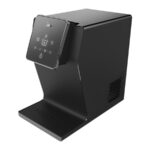To put a hose bib in the garage in Austin, Texas, you can follow a quick and easy DIY method. This involves installing a new sill faucet inside the garage for convenient access to water for washing trucks, cars, or even for dog washes.
There are various YouTube videos and online forums that provide step-by-step instructions and tips for adding a hose bib in the garage. Additionally, it is important to winterize the garage spigot to prevent freezing during cold temperatures. Overall, adding a hose bib in the garage can provide a practical water source for various purposes.
Introduction To Garage Hose Bib Installation
Installing a hose bib in your garage can bring a myriad of benefits, making it easier to wash your car, water plants, and tackle various DIY projects. With the right tools and a bit of know-how, you can successfully complete this project yourself. Before diving into the installation process, it’s crucial to understand the advantages of having a hose bib in your garage and the essential steps to plan your DIY project.
Benefits Of A Hose Bib In The Garage
- Convenient access to water for washing vehicles and watering plants
- Facilitates DIY projects such as cleaning outdoor equipment and tools
- Eliminates the need for long hoses, making the garage area more organized
- Increases the overall functionality and versatility of the garage space
Planning Your Diy Project
Before starting the installation process, it’s important to consider the location of the hose bib in the garage, the necessary tools and materials, and any potential plumbing challenges that may arise. Take measurements and ensure that the chosen location allows for easy access to the water source while minimizing the risk of freezing during colder months. Additionally, familiarize yourself with the local building codes and regulations that may impact the installation of a hose bib in your garage.

Credit: www.garagejournal.com
Tools And Materials Needed
When it comes to installing a hose bib in your garage, having the right tools and materials is crucial for a successful and efficient installation process. Here’s a breakdown of the essential tools and materials you’ll need to get the job done:
List Of Essential Tools
Before getting started, make sure you have the following tools on hand:
- Adjustable wrench
- Tape measure
- Hacksaw
- Pipe cutter
- Drill and bits
- Screwdriver
- Level
- Pipe wrench
- Torch kit (for soldering)
Selecting The Right Materials
Equally important are the materials you’ll need to install the hose bib. Here’s what you’ll require:
| Materials | Details |
|---|---|
| Copper pipe or PEX tubing | For the water supply line |
| Outdoor hose bib | Choose a frost-proof model for durability |
| Pipe fittings | To connect the hose bib to the water supply line |
| Primer and cement (for PVC pipes) | If using PVC for the water supply line |
| Teflon tape | For sealing threaded connections |
| Solder and flux | If using copper pipes |
| Pipe insulation | To protect against freezing temperatures |
| Silicone caulk | For sealing around the hose bib mounting plate |
Choosing The Location
When putting a hose bib in the garage, it is important to carefully choose the location. Consider factors such as accessibility, convenience, and protection from freezing temperatures to ensure optimal functionality.
Assessing Water Source Proximity
When it comes to choosing the location for your hose bib in the garage, one of the key factors to consider is the proximity to a water source. Assessing the water source proximity is important as it will determine the ease of connecting your hose bib to a water supply.
Start by identifying the nearest water source to your garage. This could be an existing water line or plumbing system. Assess how far the water source is from the garage and determine if it is feasible to extend the water line or install a new one to reach the desired location for the hose bib.
If the water source is located nearby, it will be more convenient and cost-effective to connect the hose bib to an existing line. However, if the water source is far away, you may need to consult a professional plumber to assess the feasibility of extending the water line to the garage.
Considering Ease Of Use And Accessibility
Another important factor to consider when choosing the location for your hose bib in the garage is ease of use and accessibility. You want to ensure that the hose bib is easily accessible and convenient to use.
Consider the layout of your garage and how you plan to use the hose bib. Will it be used for washing your car, watering plants, or other purposes? Determine the ideal location based on your specific needs.
Here are a few factors to consider:
- Choose a location that is easily reachable and does not require bending or stretching too much.
- Ensure that the hose bib is installed at a comfortable height for easy access.
- Consider the placement of other equipment or items in the garage to avoid any obstructions.
By carefully assessing the water source proximity and considering the ease of use and accessibility, you can choose the perfect location for your hose bib in the garage. This will ensure convenience and efficiency when using your hose for various tasks.
Preparation Steps
Before installing a hose bib in your garage, there are a few important preparation steps you need to take. By following these steps, you can ensure a smooth installation process and avoid any potential issues.
Shutting Off Water Supply
The first step in preparing to install a hose bib in your garage is to shut off the water supply. Locate the main water shut-off valve in your home and turn it off. This will prevent any water flow while you work on the installation.
Marking And Measuring
Once the water supply is shut off, the next step is to mark and measure the location where you want to install the hose bib. Take into consideration the convenience and accessibility of the location. You may want to choose a spot near a wall or at a height that is comfortable for you to reach.
Using a measuring tape, measure the distance from the nearest water source to the desired location for the hose bib. This will help you determine the length of pipe needed for the installation.
After measuring, mark the location with a pencil or marker. Make sure to double-check the measurements and ensure that the marked spot is level and centered.
Once you have marked and measured the location, you are ready to proceed with the installation of the hose bib in your garage.
Installation Process
Installing a hose bib in the garage is a simple process that provides convenient access to water for various purposes. It involves cutting the necessary holes, connecting the PEX tubing, and ensuring proper sealing. With this addition, you can easily wash your car or water plants without hassle.
Drilling And Mounting The Hose Bib
To start with, drill a hole in the desired location of the garage wall, ensuring that it is large enough to accommodate the hose bib. Next, insert the hose bib into the hole and secure it in place by tightening the mounting screws. Make sure that the hose bib is level and flush against the garage wall.Connecting To The Water Line
Once the hose bib is mounted securely, connect it to the water line. If your garage already has a water line, simply attach a Shark Bite braided hot water heater connector to the hose bib and connect it to the existing water line. However, if you don’t have a water line in your garage, you will need to run a new one. This may involve digging a trench and laying down PEX tubing.Cost to Install Outdoor Water Spigot
The cost to install an outdoor water spigot in your garage can vary depending on a few factors, such as the location of your garage, the materials used, and the complexity of the installation. On average, the cost can range from $200 to $500.How to Prep Your Home’s Hose Bibs for Winter
It’s important to prepare your garage’s hose bib for winter by turning off the interior shut-off valve leading to the outdoor spigots and opening them to let the water drain out. This will prevent the hose bib from freezing and causing damage to your plumbing system. In conclusion, installing a hose bib in your garage can provide a convenient source of water for various purposes. By following the above installation process, you can easily add a hose bib to your garage and enjoy the benefits it offers.
Credit: www.doityourself.com
Sealing And Waterproofing
Installing a hose bib in the garage requires proper sealing and waterproofing to prevent water damage. It’s important to choose the right location and materials to ensure a secure and long-lasting installation. Professional plumbers can help with the process and provide guidance on the best practices for sealing and waterproofing.
Sealing and waterproofing are crucial steps when installing a hose bib in your garage. Without proper sealing, your hose bib may leak, causing water damage to your garage. To ensure a leak-proof setup, follow these steps.Applying Sealant
Before installing your hose bib, apply a layer of sealant around the hole where the hose bib will be installed. This will prevent water from seeping through the gap between the hose bib and the wall. Use a high-quality sealant that is suitable for both indoor and outdoor use. Apply the sealant according to the manufacturer’s instructions and allow it to dry completely before installing the hose bib.Ensuring A Leak-proof Setup
Once you have installed the hose bib, test it for leaks. Turn on the water and check for any signs of water dripping or spraying from the hose bib or the connections. If you notice any leaks, tighten the connections or replace any faulty parts. You can also apply a layer of waterproof tape or sealant around the connections to prevent leaks. To further ensure a leak-proof setup, consider installing a frost-proof hose bib. These hose bibs are designed to prevent freezing during winter, which can cause the pipes to burst and lead to leaks. Frost-proof hose bibs have a longer stem that extends into the warmer area of your garage, preventing the water from freezing and causing damage. In conclusion, sealing and waterproofing are essential steps when installing a hose bib in your garage. By following these steps, you can prevent leaks and water damage, ensuring a long-lasting and functional setup.Testing The Hose Bib
Install a hose bib in your garage for easy access to water. Testing the hose bib ensures proper functionality before using it for washing cars or watering plants. It’s a convenient addition to your garage for various outdoor tasks.
Checking For Leaks
Before you start using your new hose bib in the garage, it’s important to check for any leaks. Leaks can lead to water wastage and damage to your property, so it’s crucial to address them as soon as possible.
To check for leaks, follow these simple steps:
- Close the hose bib by turning the handle clockwise.
- Inspect the area around the hose bib for any signs of water leakage, such as wet spots or dripping water.
- If you notice any leaks, tighten the connections using a wrench or pliers. Be careful not to overtighten, as this can cause damage.
- Once you’ve tightened the connections, turn on the water supply and check for any additional leaks.
- If there are still leaks, you may need to replace the hose bib or seek professional help.
Functional Testing
After ensuring there are no leaks, it’s time to perform a functional test on your hose bib in the garage. This test will help you ensure that the hose bib is working properly and delivering water as expected.
To conduct a functional test, follow these steps:
- Make sure the hose bib is closed by turning the handle clockwise.
- Attach a garden hose to the hose bib.
- Turn on the water supply by turning the handle counterclockwise.
- Check if water is flowing through the hose.
- Inspect the hose and connections for any signs of leaks or drips.
- If everything looks good, you can now use your hose bib in the garage for various purposes like washing your car or watering your plants.
Remember to turn off the water supply and disconnect the hose after each use to prevent water wastage and potential damage to your hose bib.
Maintenance And Upkeep
Regular maintenance and upkeep of your hose bib in the garage is essential to ensure its proper functioning and longevity. By following some simple inspection tips and winterizing techniques, you can prevent leaks, freezing, and other issues that may arise. Let’s explore these maintenance practices in more detail.
Regular Inspection Tips
Regularly inspecting your hose bib can help identify any potential problems before they escalate. Here are some inspection tips to keep in mind:
- Check for leaks: Look for any signs of leaks around the hose bib, such as water pooling or dripping. If you notice any leaks, it’s crucial to address them promptly to prevent water damage.
- Inspect the handle and valve: Ensure that the handle turns smoothly and that the valve opens and closes properly. If you notice any stiffness or difficulty in operating the handle, it may indicate a need for lubrication or repair.
- Examine the connection: Inspect the connection between the hose bib and the water supply line for any signs of damage or corrosion. Tighten any loose connections to prevent leaks.
- Check for debris: Clear any debris or obstructions from the hose bib’s spout to ensure proper water flow. Use a soft brush or cloth to remove any dirt or sediment.
Winterizing Your Hose Bib
Winterizing your hose bib is crucial to prevent freezing and potential damage during the cold months. Here’s how you can winterize your hose bib:
- Turn off the water supply: Locate the shut-off valve that controls the water supply to the hose bib. Shut off the water flow and drain any remaining water from the line by opening the valve.
- Disconnect and store hoses: Disconnect any hoses attached to the hose bib and drain them thoroughly. Store them in a dry place to prevent freezing and damage.
- Insulate the hose bib: Use an insulation cover or wrap the hose bib with an insulating material to provide an extra layer of protection against freezing temperatures.
- Consider a frost-free hose bib: If you live in an area with harsh winters, installing a frost-free hose bib can be a wise investment. These bibs are designed to prevent freezing by keeping the water valve inside the heated portion of your garage.
By following these maintenance and winterizing practices, you can ensure that your hose bib in the garage remains in optimal condition throughout the year. Regular inspections and proper care will help prevent any issues and extend the lifespan of your hose bib.
Adding Hot/cold Water Options
When adding a hose bib in your garage, you can consider incorporating hot and cold water options to make it more versatile and convenient. This can be especially useful for tasks such as pet grooming, car washing, and general cleaning needs.
Installing A Mixing Valve
One way to add hot and cold water options is by installing a mixing valve. This valve allows you to control the temperature of the water coming out of the hose bib, giving you the flexibility to use both hot and cold water as needed. It’s a great addition for tasks that require specific water temperatures, such as warm water for pet baths or cold water for car washing.
Setting Up For Pet And Car Washing
By incorporating hot and cold water options, you can create a dedicated space in your garage for pet and car washing. This setup enables you to provide a comfortable and efficient bathing experience for your pets while also making car washing more convenient and effective. With the ability to adjust the water temperature, you can ensure that both your pets and vehicles are cleaned with care.
Cost Considerations
When considering the installation of a hose bib in your garage, it’s important to factor in the cost implications. Estimating expenses and finding ways to save on installation can help you make an informed decision about this valuable addition to your property.
Estimating Expenses
Before proceeding with the installation of a hose bib in your garage, it’s crucial to assess the potential expenses involved. The cost estimation typically includes the price of materials, labor, and any additional tools or equipment required for the installation.
Some of the key cost factors to consider when estimating expenses for a garage hose bib installation may include:
- The cost of the hose bib fixture itself
- Labor charges for the installation
- Cost of any necessary permits or inspections
- Additional materials such as piping, fittings, and insulation
- Potential costs for repairing any damage during installation
Saving Money On Installation
While the installation of a hose bib in your garage may involve certain expenses, there are several strategies to save money on the overall installation process.
Some effective ways to save money on the installation of a garage hose bib include:
- Comparing quotes from multiple contractors to find the best price
- Considering DIY installation if you have the necessary skills and knowledge
- Opting for cost-effective yet durable hose bib fixtures
- Exploring potential rebates or incentives for water-efficient fixtures
- Utilizing existing plumbing connections to minimize new piping requirements
Troubleshooting Common Issues
When it comes to installing a hose bib in the garage, it’s important to be aware of potential issues that may arise. Troubleshooting common problems can help ensure that your hose bib functions properly and efficiently. Here are some common issues that you may encounter and how to address them:
Dealing With Low Water Pressure
If you notice low water pressure from your hose bib in the garage, there are a few potential causes to consider. First, check for any obstructions or clogs in the hose or the bib itself. Clearing any debris or blockages can often resolve low water pressure issues. Additionally, check the main water supply line to ensure that it is fully open and not restricted in any way. If the issue persists, it may be necessary to consult a professional plumber to assess and address the underlying cause of the low water pressure.
Fixing Drips And Leaks
Drips and leaks from the hose bib can be a common annoyance, but they are often easily remedied. Start by inspecting the hose bib for any visible signs of damage or deterioration, such as worn washers or seals. Replacing these components can often resolve minor leaks. If the leak persists, it may be necessary to tighten connections or replace the hose bib altogether. Additionally, consider using Teflon tape or pipe thread sealant on threaded connections to create a watertight seal and prevent leaks.

Credit: m.youtube.com
Legal And Safety Considerations
Before installing a hose bib in the garage, it’s crucial to consider legal and safety aspects. Check local building codes and obtain necessary permits to ensure compliance. Prioritize safety by installing the hose bib at a suitable height to prevent potential hazards and ensure proper insulation to prevent freezing in colder climates.
Legal and Safety Considerations for Putting a Hose Bib in the Garage When it comes to installing a hose bib in your garage, it’s important to consider both legal and safety considerations. Understanding building codes and safety precautions during DIY are crucial to ensure a successful and safe installation.Understanding Building Codes
Before installing a hose bib in your garage, it’s important to check your local building codes. Some cities have specific regulations on the installation of outdoor water fixtures, including hose bibs. These codes may dictate the placement of the hose bib, the type of valve required, and the materials used for installation. It’s also important to note that building codes can change over time. If you’re unsure about the current regulations, check with your local building department or consult a professional plumber.Safety Precautions During Diy
Installing a hose bib in your garage is a DIY project that can save you time and money. However, it’s important to take safety precautions to avoid injuries or accidents during the installation process. Here are some safety tips to keep in mind:- Wear protective gear, including gloves and safety glasses, to protect yourself from sharp objects and debris.
- Make sure the water supply is turned off before beginning the installation process.
- Use proper tools and equipment to avoid damaging pipes or fixtures.
- Follow manufacturer instructions carefully when installing the hose bib.
- Test the fixture for leaks before using it.
Frequently Asked Questions
How Much Does It Cost To Install A Hose Bib In A Garage?
The cost to install a hose bib in a garage typically ranges from $150 to $300.
How Cold Does It Have To Be For A Hose Bib To Freeze?
Hose bibs can freeze when the temperature drops below 20 degrees Fahrenheit. It is important to protect your hose bibs during cold weather to prevent freezing and potential damage.
Is It Ok To Leave Hose Bib On All The Time?
Leaving a hose bib on all the time is not recommended as it can lead to unnecessary water wastage and increased wear. It is better to turn off the hose bib when it is not in use to conserve water and prevent any potential damage.
How Do You Winterize A Garage Spigot?
To winterize a garage spigot, turn off the interior shut-off valve leading to the outdoor spigot and open it to let the water drain out. Leave it open for a few hours. This will prevent freezing and damage to the spigot during the winter months.
Q: Can I Install A Hose Bib In My Garage?
A: Yes, you can install a hose bib in your garage to easily access water for various tasks.
Conclusion
Installing a hose bib in your garage can provide a convenient water source for various tasks like washing your car or watering plants. With the right tools and knowledge, this DIY project can be completed with ease. Remember to turn off the water supply and properly winterize the hose bib to prevent freezing and damage.
Adding a hose bib in your garage can be a valuable addition to your home and a practical solution for your outdoor water needs.




